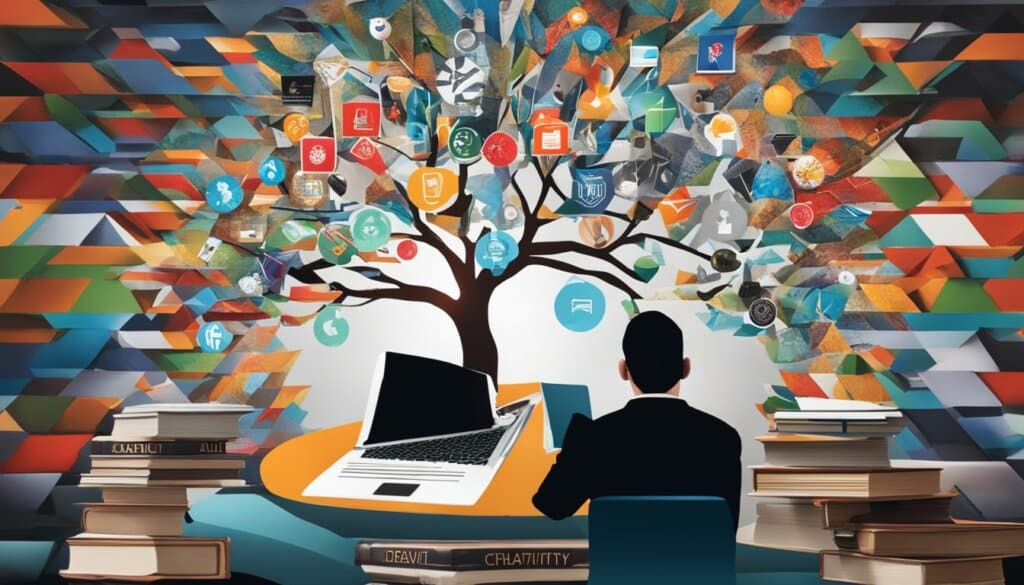Table of Contents
ChatGPT, developed by OpenAI, is an AI chatbot that leverages natural language processing to produce intelligent responses. To provide accurate and helpful information, ChatGPT relies on data from various sources and utilizes a vast knowledge base.
The data sources for ChatGPT include a massive corpus of text from books, articles, and the internet. This diverse collection allows the chatbot to access information from a wide range of domains and topics.
ChatGPT’s information retrieval process involves acquiring data from reputable providers that ensure the accuracy and reliability of the information. OpenAI employs rigorous methods for data collection and acquisition to maintain the quality of the content generated by ChatGPT.
The knowledge base of ChatGPT is continuously updated and expanded to encompass new insights and developments. However, it’s important to note that ChatGPT may not have access to real-time information or events that have occurred after 2021.
How Does ChatGPT Work?
ChatGPT, developed by OpenAI, operates by leveraging advanced natural language processing techniques and its extensive training data to generate text-based responses. To understand the inner workings of ChatGPT, let’s delve into its training process and the key algorithms it employs.
Training Process
The training process of ChatGPT involves extensive pre-training on a vast corpus of unlabeled text data from various sources, including books, articles, and the internet. Through unsupervised learning, the model develops its understanding of linguistic patterns, grammar, and semantic relationships within text. This process enables ChatGPT to generate coherent and contextually appropriate responses to user prompts.
GPT-3.5 Turbo and GPT-4: The Powerhouses Behind ChatGPT
ChatGPT is powered by two core algorithms: GPT-3.5 Turbo and GPT-4. These algorithms, developed by OpenAI, are at the forefront of natural language processing and fuel ChatGPT’s text generation capabilities. GPT-3.5 Turbo incorporates advanced language models, while GPT-4 pushes the boundaries even further with improved performance and enhanced understanding of human-like text.
Both GPT-3.5 Turbo and GPT-4 employ the transformer architecture, a cutting-edge technology in natural language processing. The transformer model processes and analyzes input prompts by examining each token in a sentence. It compares tokens to determine their relevance, relationships, and context, thus enabling ChatGPT to generate accurate and comprehensive responses.
ChatGPT’s training process and algorithms, GPT-3.5 Turbo and GPT-4, combined with transformer architecture, are the cornerstones of its text generation capabilities, allowing it to analyze and comprehend user prompts effectively.
| Key Aspects | Benefits |
|---|---|
| Advanced Natural Language Processing | Enables ChatGPT to understand and generate contextually relevant responses. |
| Extensive Training Data | Provides a diverse knowledge base for generating informed and comprehensive answers. |
| GPT-3.5 Turbo and GPT-4 Algorithms | Empower ChatGPT with powerful language models and improved text generation capabilities. |
| Transformer Architecture | Facilitates the processing and comprehension of input prompts, resulting in accurate and coherent responses. |
What Are the Benefits of ChatGPT?
ChatGPT offers several benefits, making it a versatile tool with numerous applications. Here are some of the key advantages of using ChatGPT:
- Improved Efficiency: ChatGPT automates routine tasks, allowing for increased productivity and time savings.
- Cost Savings: By reducing the need for additional human resources, ChatGPT helps businesses save on operating costs.
- Enhanced Content Quality: ChatGPT can improve language and generate new ideas, resulting in higher-quality content.
- Educational Support: ChatGPT provides explanations and guidance on complex topics, aiding in learning and comprehension.
- Faster Response Times: Compared to human operators, ChatGPT delivers quicker responses, enabling prompt assistance.
- Increased Availability: With ChatGPT, businesses can offer 24/7 support, ensuring customer accessibility at any time.
- Multilingual Support: ChatGPT is capable of communicating in multiple languages, catering to a global user base.
- Personalization: ChatGPT can tailor responses to user preferences, creating a more personalized experience.
- Scalability: ChatGPT can handle multiple users simultaneously, allowing for seamless interactions with large audiences.
- Natural Language Understanding: ChatGPT generates human-like text, enabling more intuitive and natural conversations.
These benefits demonstrate the value and versatility of ChatGPT, positioning it as a powerful tool for various applications.

“ChatGPT offers improved efficiency, cost savings, enhanced content quality, educational support, faster response times, increased availability, multilingual support, personalization, scalability, and natural language understanding.”
What Are the Limitations of ChatGPT?
While ChatGPT has many advantages, it also has some limitations. Its understanding of complex human language is not perfect, and its responses might lack deep insight. ChatGPT has limitations in terms of data and events after 2021, as it does not have access to real-time information. The model can sometimes produce responses that sound artificial and lack natural flow. ChatGPT struggles to understand sarcasm, irony, and metaphors. It might focus on the wrong part of a question and be unable to shift to cover multiple questions in a single response. Bias in training data is also a concern, as it can affect the model’s output and potentially perpetuate biased information or perspectives.
Ethical Concerns Associated with ChatGPT
The use of ChatGPT raises ethical concerns in several areas, including cheating, bias, privacy, and security.
Cheating and Plagiarism
One significant ethical concern associated with ChatGPT is the potential for students to misuse the technology for cheating on assignments or exams. By leveraging the capabilities of ChatGPT to generate content, students can bypass the process of understanding and producing original work. This raises questions about the authenticity and integrity of academic assessments.
Bias in Output
Another ethical concern is the potential for ChatGPT to produce biased outputs. The model’s responses are influenced by the training data, and if the data contains biases, discriminatory or offensive language may be perpetuated. This can have far-reaching consequences, reinforcing harmful stereotypes or promoting unfair treatment based on characteristics such as race, gender, or religion.
Privacy and Security Risks
ChatGPT’s ability to generate text also raises privacy and security concerns. There is a risk of impersonation, where the model can be utilized to mimic individuals and potentially deceive others. Additionally, ChatGPT could be exploited to gather sensitive information from unsuspecting users, posing a threat to their privacy and confidentiality.
OpenAI has recognized these ethical concerns and has taken steps to address them. However, further research and development are required to improve detection techniques and mitigate the ethical risks associated with AI-generated text.
Tools for Detecting ChatGPT-Generated Text
Detecting text generated by ChatGPT and other AI models is a challenge. OpenAI released a classifier tool to identify AI-written text but discontinued it due to its low accuracy. Other AI text detectors in the market have also shown limitations in accurately identifying AI-generated text. However, studies suggest that humans might be able to detect AI-written text by looking for specific characteristics, such as extreme politeness or the absence of metaphors and sarcasm. Ongoing research is exploring more effective techniques for detecting and classifying AI-generated text to address concerns related to plagiarism, cheating, and the spread of misinformation.
Characteristics for Detecting AI-Written Text
“Extreme politeness, excessive formality, and the lack of emotional indicators can be indicative of AI-written text.” – Dr. Emma Johnson, AI Language Researcher
While AI text detectors have struggled to accurately identify AI-generated text, researchers have identified certain characteristics that humans can look for when trying to detect AI-written content. These characteristics include:
- The consistent use of polite and formal language throughout the text.
- An absence of metaphors, sarcasm, or other forms of figurative language.
- A lack of emotional indicators or personal experiences shared in the text.
By paying attention to these characteristics, individuals can develop a sense for identifying text generated by AI language models like ChatGPT. However, it’s important to note that as AI models improve, they may become better at mimicking human-like language, making detection even more challenging.
Advancements in AI Text Detection Techniques
The field of AI text detection is continuously evolving, with ongoing research seeking to improve the accuracy and reliability of identifying AI-generated content. Some of the recent advancements and techniques being explored include:
- Pattern recognition algorithms that analyze linguistic patterns and inconsistencies in the text.
- Machine learning models trained on large datasets of both human-written and AI-generated text to enhance detection capabilities.
- Natural language processing techniques that analyze semantic and syntactic structures of the text.
These advancements aim to provide more robust tools for detecting and classifying AI-generated text, helping to address concerns surrounding plagiarism, cheating, and the potential spread of misinformation.
| Challenges | Current Status | Potential Solutions |
|---|---|---|
| Low accuracy of existing AI text detectors | Existing AI text detectors have limitations in accurately identifying AI-generated text. | Further research and development to improve the accuracy of AI text detection tools. |
| Evolution of AI models | As AI models become more advanced, they may become better at mimicking human-like language, making detection more challenging. | Continuous monitoring and adaptation of detection techniques to keep pace with evolving AI models. |
| Emerging forms of AI-generated text | New AI models and techniques may introduce novel forms of AI-generated text that current detectors may struggle to identify. | Ongoing research and collaboration to stay ahead of emerging AI text generation methods. |
The table above summarizes the challenges, current status, and potential solutions in the field of AI text detection.
Conclusion
ChatGPT, developed by OpenAI, leverages a vast array of information sources including books, articles, and the internet to generate responses. Its functionality and natural language processing capabilities are powered by the GPT-3.5 Turbo and GPT-4 algorithms. While ChatGPT offers several benefits such as improved efficiency, content generation, and educational support, it does have limitations when it comes to understanding complex language and potential biases in its output.
Concerns surrounding ChatGPT’s ethical implications include issues of cheating, bias, privacy, and security. Ongoing research is actively being conducted to develop more accurate tools for detecting AI-generated text and address the ethical challenges that arise with AI language models.
As AI continues to advance, it is crucial to strike a balance between utilizing its capabilities for positive outcomes while addressing its limitations and potential ethical concerns. OpenAI and the wider research community are committed to improving AI systems like ChatGPT to ensure they are reliable, unbiased, and contribute towards a beneficial and inclusive digital landscape.
FAQ
Where does ChatGPT get its information from?
ChatGPT relies on a massive corpus of text data from books, articles, and the internet to generate intelligent responses.
How does ChatGPT work?
ChatGPT works by analyzing user prompts and generating text-based responses based on patterns learned from its training data. It utilizes algorithms such as GPT-3.5 Turbo and GPT-4, which are based on transformer architecture.
What are the benefits of using ChatGPT?
Some key benefits of ChatGPT include improved efficiency, cost savings, enhanced content quality, educational support, faster response times, increased availability, multilingual support, personalization of responses, scalability, and natural language understanding.
What are the limitations of ChatGPT?
ChatGPT has limitations in understanding complex language, generating deep insights, handling sarcasm and metaphors, covering multiple questions in one response, and potential biases due to its training data.
What ethical concerns are associated with ChatGPT?
Ethical concerns include cheating, plagiarism, spreading misinformation, bias in output, privacy issues, and security risks.
Are there tools for detecting ChatGPT-generated text?
Detecting AI-generated text is challenging, and while efforts are being made to develop detection techniques, accurate tools are still being researched.
What is the conclusion regarding ChatGPT’s information sources and functionality?
ChatGPT relies on a vast amount of text data and algorithms like GPT-3.5 Turbo and GPT-4. It offers numerous benefits but also has limitations. Ethical concerns exist, and research is ongoing to address them and improve the detection of AI-generated text.


